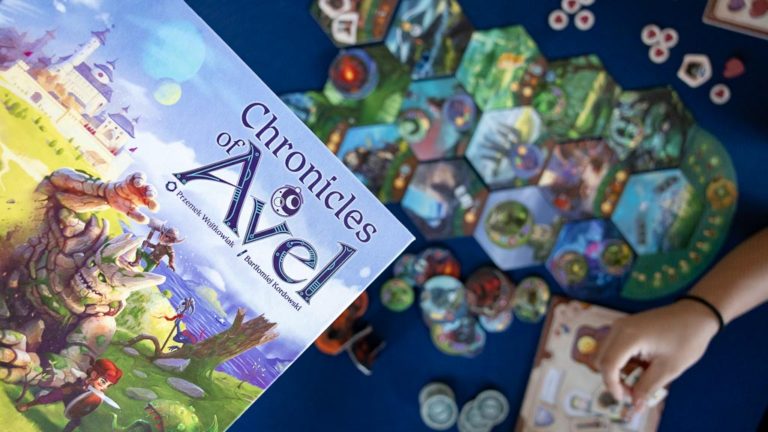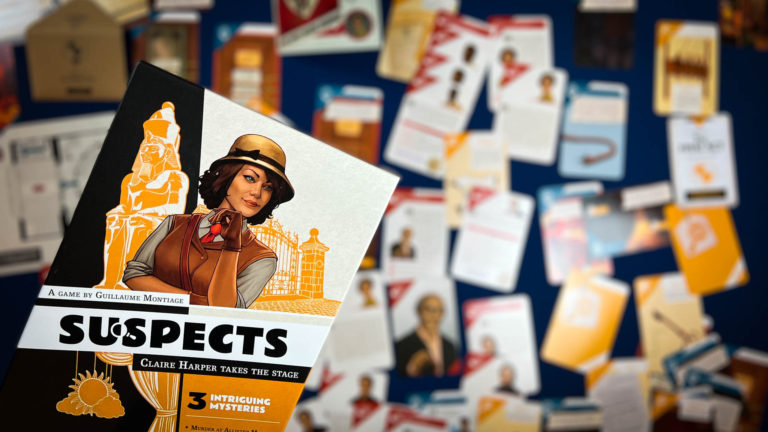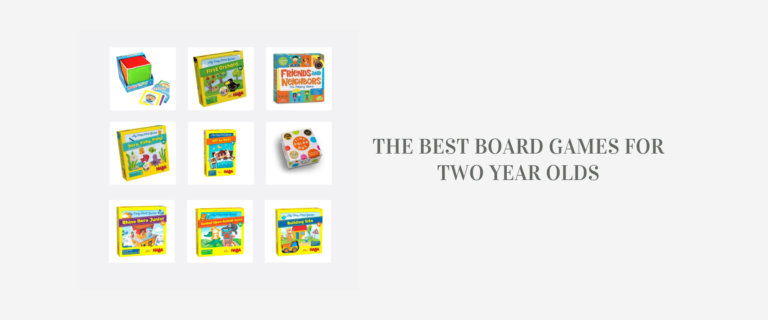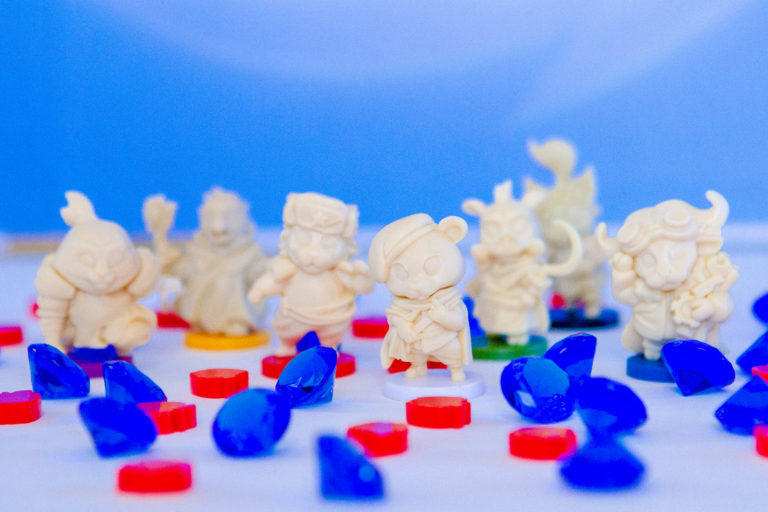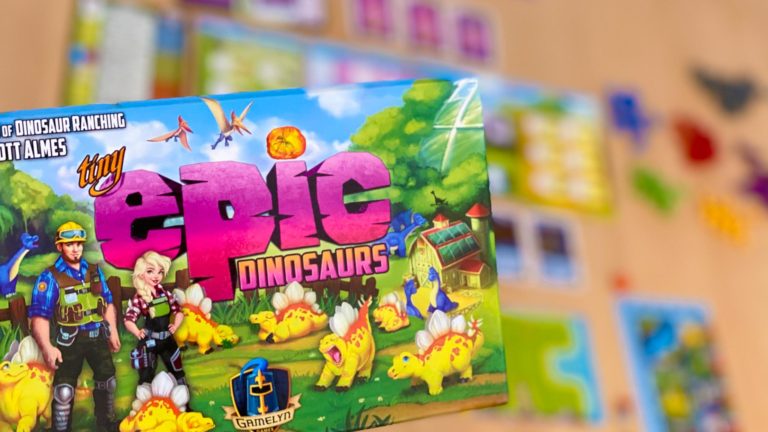City Building. Roll and Write. Puzzles. Oh my!
These are a few of my favorite types of games and Tiny Towns takes a bit from each and rolls it up into a fun game for 1 to 6 players! If you’re on the hunt for a lighter strategy game you can have fun playing with both new and experienced gamers alike, you should definitely give Tiny Towns a look!
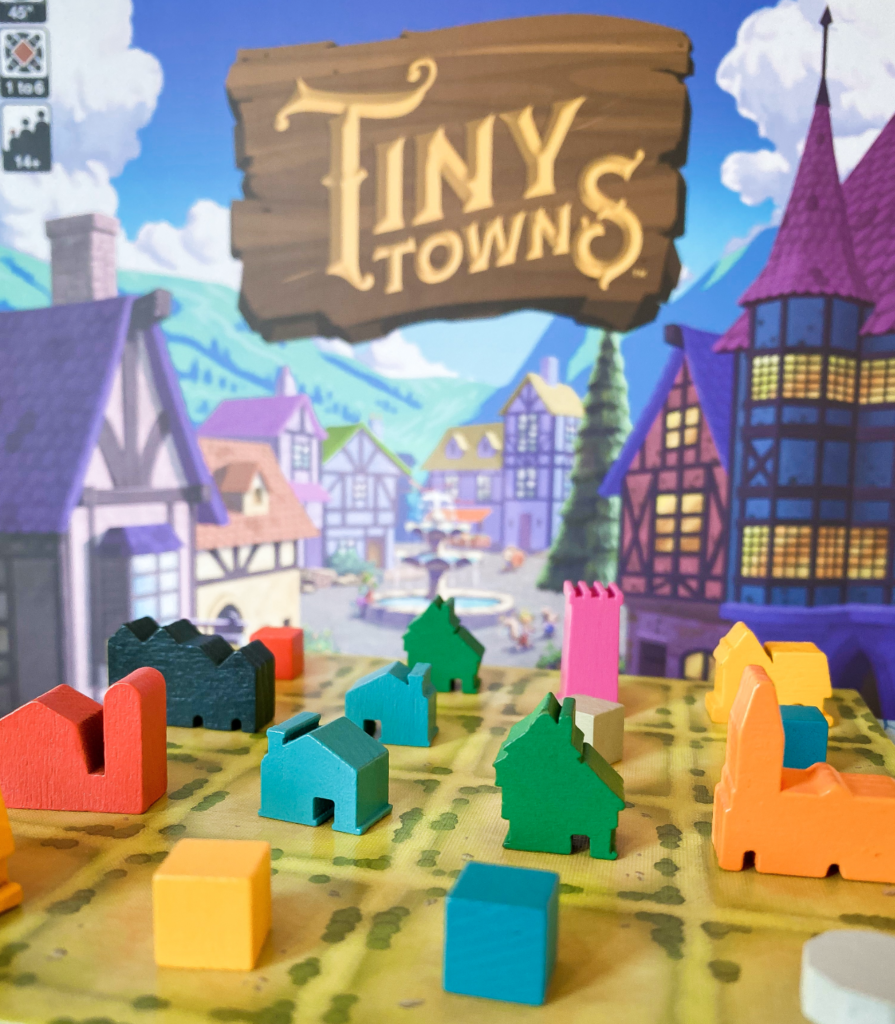
How Do You Play Tiny Towns?
To win Tiny Towns, you must build the most well planned, prosperous city that earns the highest victory points.
There are multiple types of buildings that you can build to place in your city, each having a different end of game scoring condition. To build these buildings, you must place resource cubes in a specific order to match the pattern shown on the building cards.
Match the pattern and you can choose place that building on your personal city board!
Do this by simply removing all of the cubes used to make the pattern of that building, and replace them with one wooden building of that type on any of those spaces. Easy as pie, right?!
Well, things start to get tricky the moment you realize you aren’t able to choose each type of resource cube you’d like to place. This duty is shared amongst you and your opponents who are also trying to build the best city but might have different plans than you.
In clockwise order, players take turns calling out the type of cubes they would like to place. Each player must then grab that color and also place it in their city. This goes swimmingly until everyone starts calling all of the colors you most definitely do not need. That’s when you have to square your shoulders and city-plan the heck out of your board to find a way to make it work!
And it’s important that you do! Because only built buildings are allowed to stay on your board when the game is over. All unused cubes are removed and any empty space on your player board counts as -1 point!
May the best city-planner win!
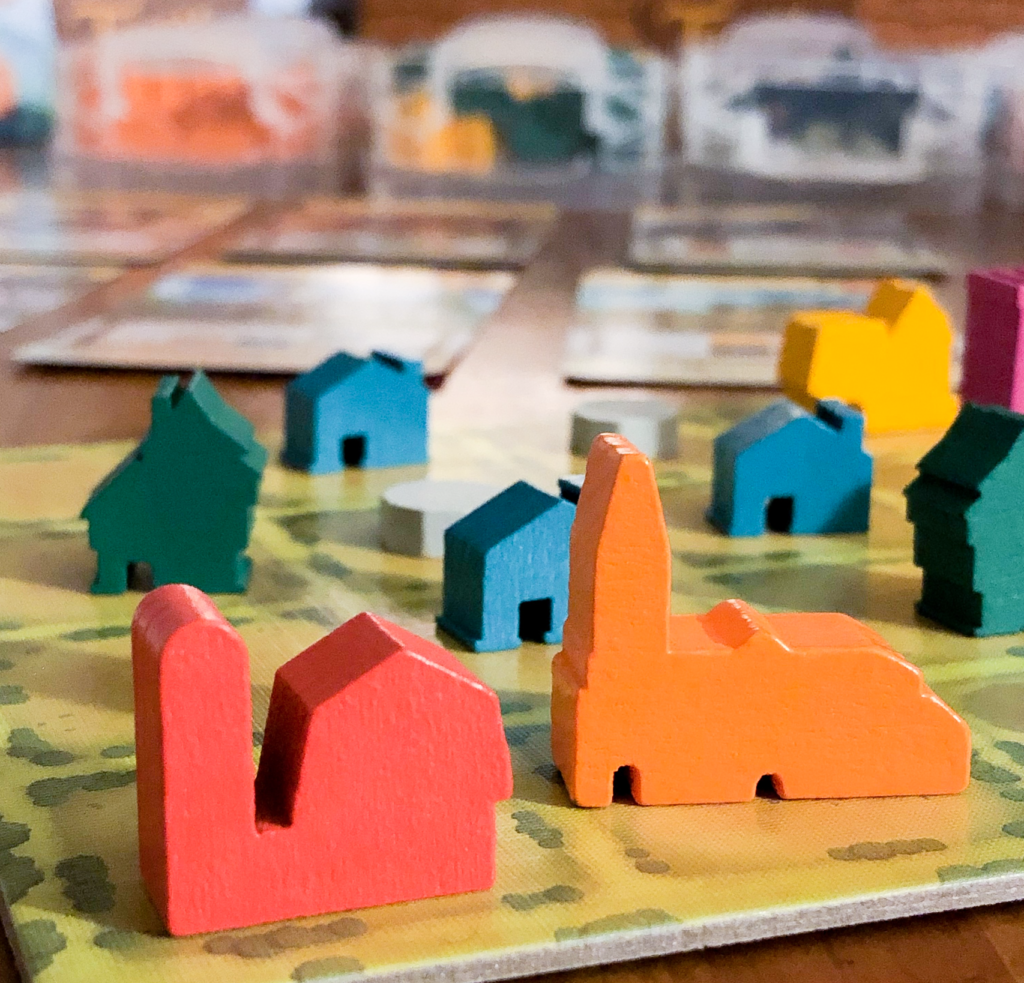
What Do We Think?
Okay, Tiny Towns is a lot of fun, but I have a very serious question to ask:
How can a game that is so easy actually be SOOO HARD???
Seriously, you can learn this game in minutes, but then you’ll spend the next 30-45 minutes puzzling over every single placement of the cubes. Your perfect plan to maximize your score will be dashed the moment another player calls out the color you don’t need.
“Are you for real? Another yellow? Whyyyy another yellow??”
The more players you play this with the harder it becomes. This is due to the fact that you will have less and less say in the colors you have to use on your player. This forces you to adapt, to strategically plan for cubes that you won’t want and place them in parts of the board where you can (hopefully) utilize them later.
It’s so tricky and so very fun, even if frustrating at times.
Now, there is a variant included that I actually really like. In stead of players taking turns calling out which cubes to build with, players will use a deck of 15 resource cards to draw from. On each card is one cube that all players must use to build with. Each round you’ll flip a card over and place that resource. Then on the third round, players each choose one of the resource cubes from the supply that they’d like to place. The pattern is then repeated and cards are shuffled when the deck runs out. I like this because everyone goes on the same journey. It feels a bit more like a roll-and-write when played this way, so if you like less player interaction, this variant will be right up your alley.
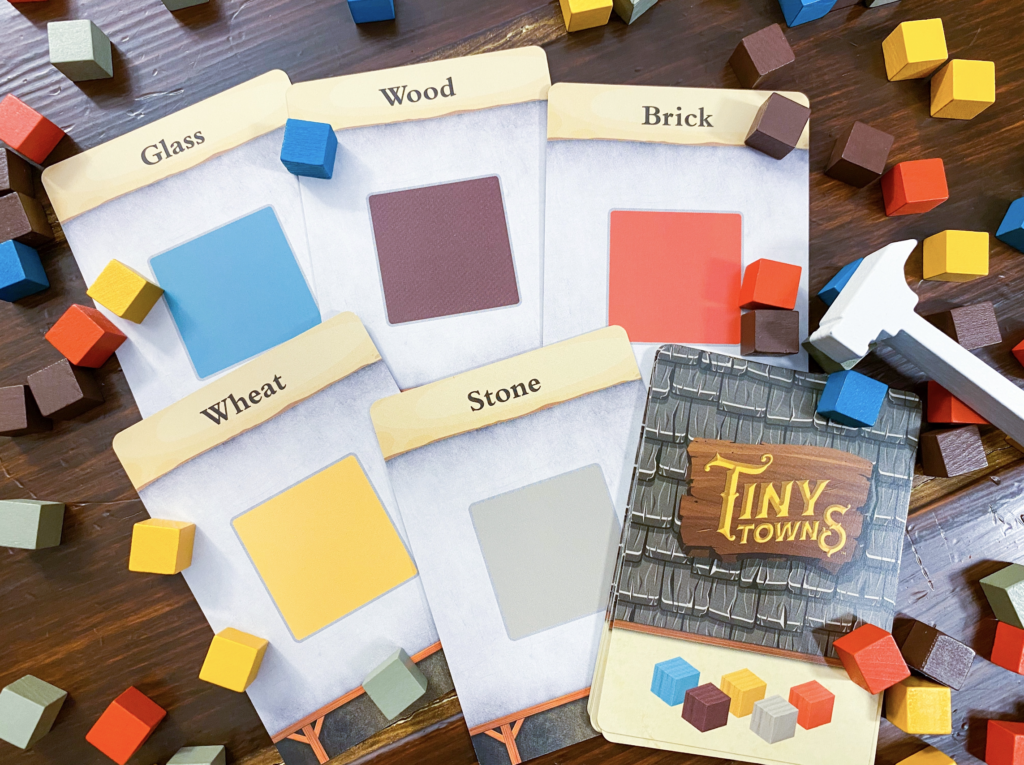
No matter which variant you like to play, Tiny Towns has this fun way of taking everyone on this ride where you’re first lightly laughing and chatting as you place cubes on your open board, then all of a sudden, your board is cramped with a bunch of pieces you don’t want and you and you’re opponents are hunched over your boards going, “oh no! Oh no, no, no. This is not good.”
I love how you have to do this balance of both planning for what you want to do and planning for what you cannot predict. There’s also comes a strategy in choosing when to draft specific squares so that they help you and hurt your opponents. Since you can see what everyone else is doing, you can kind of gauge what buildings they might be working towards. Perhaps you need both a yellow and a gray to complete your building. If you see that your opponent also needs a yellow, you might choose to draft the gray first, hoping to throw them off.
Other times you have to choose to abandon your plans. I might build something I don’t need just because I can’t afford to lose the points for empty spaces. Learning how to not trap yourself into this predicament is a tricky dance you play with the board. It’s not uncommon to make it so you have areas of the board that you cannot build on due to poor planning. It’s a challenging aspect of the puzzle; if you crack it, let me know!
The sweet spot for player count is that 2-4 range; especially if you like to have a bit more control. (* points to self *) There’s also a very nice solo variant for those wishing to take on a solitaire challenge as well!
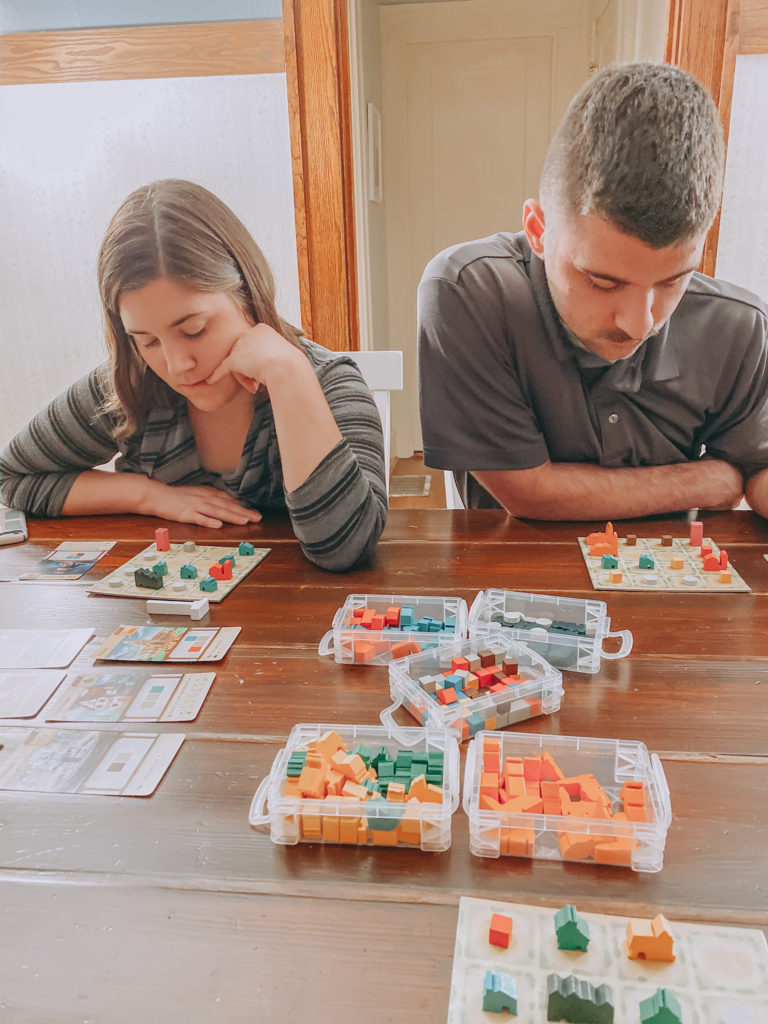
Tiny Towns makes a fantastic gateway game to introduce to folks new to the hobby. It’s that right amount of easy to learn/difficult to master that becomes addicting. Everyone is going to want a second go at this. Then a third, and a fourth!
If you’ve got kids, you may be wondering about the 14+ age on the box. Kids younger than 14 can definitely enjoy this game. A lot of the strategy of planning and problem solving might be difficult, but there’s nothing here mechanically that they shouldn’t be able to handle. It’s just a tricky puzzle. I’d say kids around 10 would be able to play independently with success. Any younger and the game might seem overwhelming and punishing.
I find Tiny Towns to be highly replayable. There are a lot of different cards that change the way victory points are earned. Mixing them up and altering which ones you play with keeps each game feeling fresh. We’ve been playing for months and still find new combinations to try.
All of the components are very high quality. There are a ton of wooden pieces, Over 200 in fact! So for a game titled Tiny Towns, it has big table presence!
Tiny Towns will be an instant hit for any fans of roll and writes, city building games like Quadropolis, or abstract strategy/puzzle games such as Azul. I find that it swims in that middle area of the pool where it is inviting enough for those just beginning their board game experience while also having a depth to it that will satisfy experienced players as well!
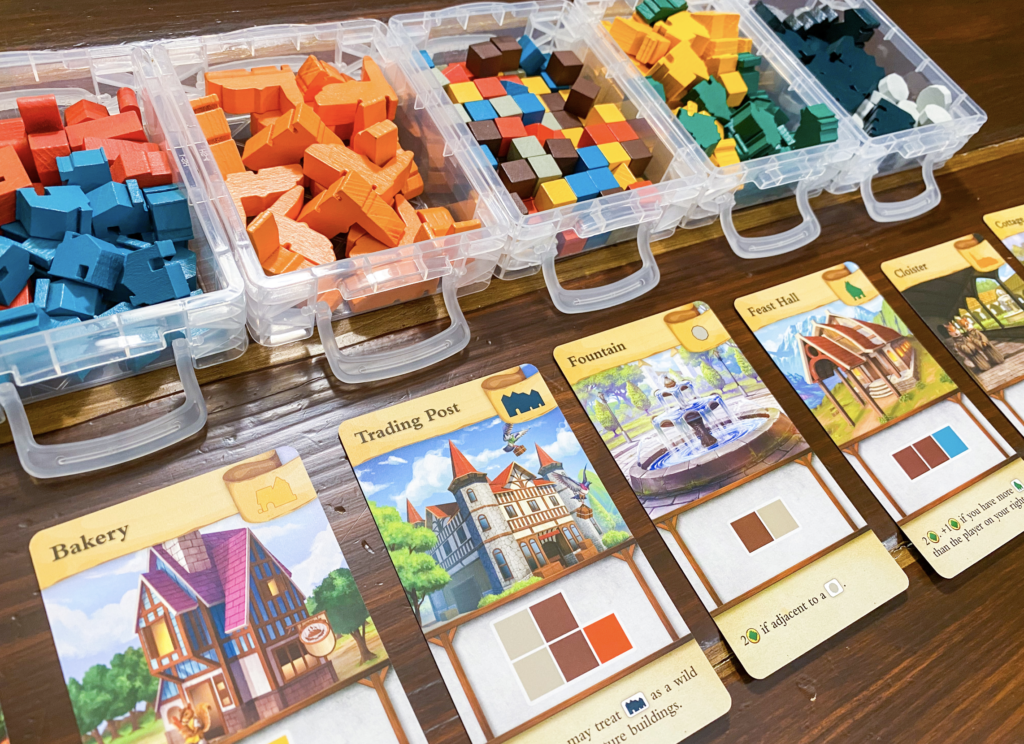
* The containers you see our components in do not come in the box.
We use crayon boxes similar to these ( option 1 / option 2 ) to help organize our components.
Game Info:
Title: Tiny Towns
1-6 Players Ages 14+
Designer: Peter McPherson
Artist: Matt Paquette
Publisher: Alderac Entertainment Group
If you liked this post you may also like:
Kingdomino Duel Review
Miyabi Review
10 Great Date Night Games


